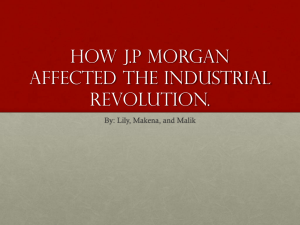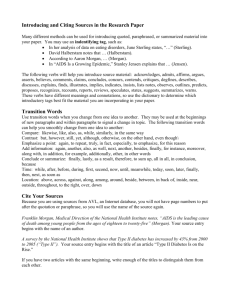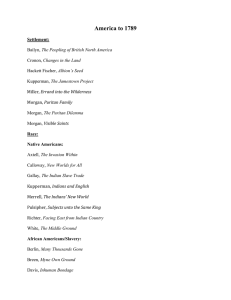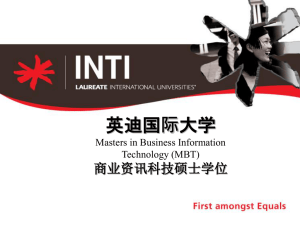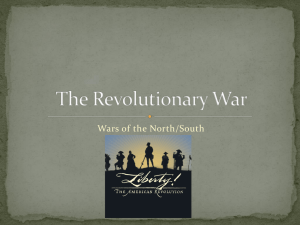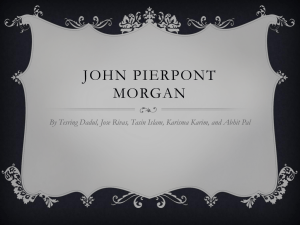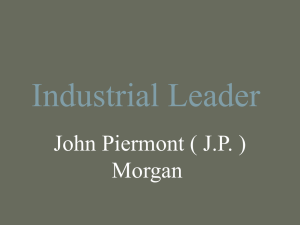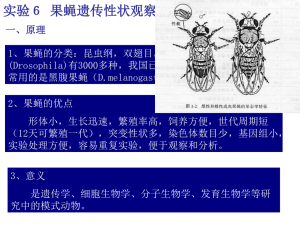Conflict and Consensus in the American Revolution
advertisement
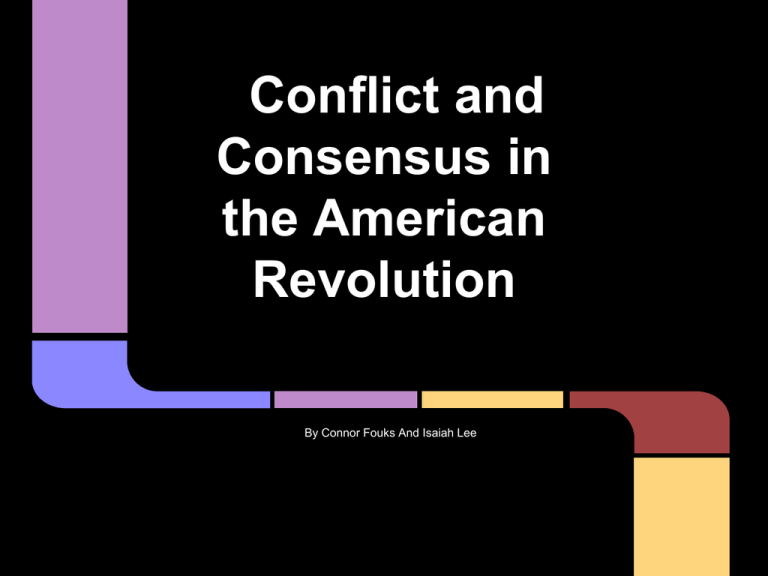
Conflict and Consensus in the American Revolution By Connor Fouks And Isaiah Lee Conceptualizing the Text ● The conflicts within colonial america and how they overcame them to throw off the yoke of oppression and drink deeply of the tea of truth ● It’s an important scholarship because it helps us understand how we could overcome our social and economic differences and unite even under such duress. Significance? ● Overall Question: was there Social conflict during the revolution, and how did it affect the outcome? ● This is significant because it challenges conceptions, and gives another view of the revolution. Format ● ● ● ● Formated as a chapter in a book Secondary source Topical - doesn't follow the line of time. Class and sectional conflict following each other topically ● This text delivers the idea effectively by broaching topics thoroughly and separately, while maintaining the general idea. Does the format work? This format I feel works the best for this information as it describes separately Class and sectional conflict then summarises both together to solidify its ideas, all while keeping the reader interested in the text. Highpoints ● The fact that the loyalists gained members from the community who felt at odds with the revolutionaries helped draw out a lot of people who would have otherwise caused problems to the revolutionaries internally. ● Disputes occurred among those who remained in the Revolutionary faction but the extraordinary Social mobility of the eighteenth century stopped those conflicts from hardening across class lines. ● One clearly defined division did exist, the division between freeman and slave. this class conflict only placed into the revolution in one incident when Lord Dunmore offered Virginia slaves their freedom in exchange for fighting for the British. ● since most laborers were in chains and the most discontent of the freemen were venting anger at the loyalists there was little internal conflict within the revolutionary faction. ● Americans of the revolutionary conflict were less successful in repressing Sectional conflicts than class conflicts. westerners often came into conflict with the eastern colonial governments which cared or knew little about their interests. Is there anything in the reading that you were surprised to see? ● The fact that governments and people held in high esteem the idea that all men are created equal while denying it to black slaves and other groups. ● I was surprised at the fact that the west and east americas were so divided. Some men even believed that these two regions would soon after the revolution concluded split into two countries. Good Quotes ● “In sum, the evidence of revolutionary class conflict is scanty, and for good reason. with a majority of laborers in chains and with the most discontent freemen venting their discontent towards loyalism, the struggle over who should rule who at home was unlikely to bear many marks of class conflict.” ● “The creed of equality did not give men equality, but invited them to claim it, invited them, not to know their place and accept it but to seek and demand a better place.” Anything you will definitely remember beyond the oral report? Beyond this report, what will go down in the histories of my mind is the distinctions between the colonies and what actually divided them. The split between the east and west being main among these, and how the conflicts therein didn’t burst forth and end the revolution before it began. Edmund S. Morgan ● Edmund S. Morgan wrote in an eloquent style while maintaining to clearly state his facts and convey complex ideas in well written succinct paragraphs. ● Education: Harvard University ● Occupation: Professor of History - Yale ● Wikipedia page dedicated to him ● Quotes about him from numerous other professors “As a historian of colonial and revolutionary America, he was one of the giants of his generation, and a writer who could well have commanded a larger nonacademic audience than I suspect he received,” said Pauline Maier, a professor of American history at the Massachusetts Institute of Technology Morgan Continued ● Morgan is most definitely an expert on the materials that he is talking about, he mined primary sources for the facts and presented them in a logical fashion while leading the reader to conclusions they wouldn’t have hitherto come to. ● Morgan has no significant events in his life that may create a bias in his writings other than his own personal thoughts. Effectiveness ● The text is effective in getting across the points it wishes to prove if the reader is willing to read critically. ● It is somewhat longer than the average reading of todays world and therefore may prove ineffective against the uninterested uncommitted reader. ● It is however a good and information packed text for those so inclined to read it properly. Bias? ● This selection Morgan presents to us could not be called biased, Morgan stated as many differing views as required for the task while maintaining no preferences among them. ● Morgan stated that the difference between conservatism and radicalism is a relative one which can only be measured in terms of itself. More BIAS?!?!? ● The author includes all relevant viewpoints to the issue, easts vs wests, and loyalists vs. patriots ● The author of this text is either not biased or so lightly so that It is inconsequential. Conclusion ● Edmund S. Morgan was truly an outstanding author of our time, and this reading selection is in no way an exception to his genius in writing. ● This text is a good secondary source filled with facts and against biased opinions, simply stating the facts. ● Conflict and consensus is an excellent scholarly writing as it orders and states facts directly from primary sources and is enjoyable to read as well.

